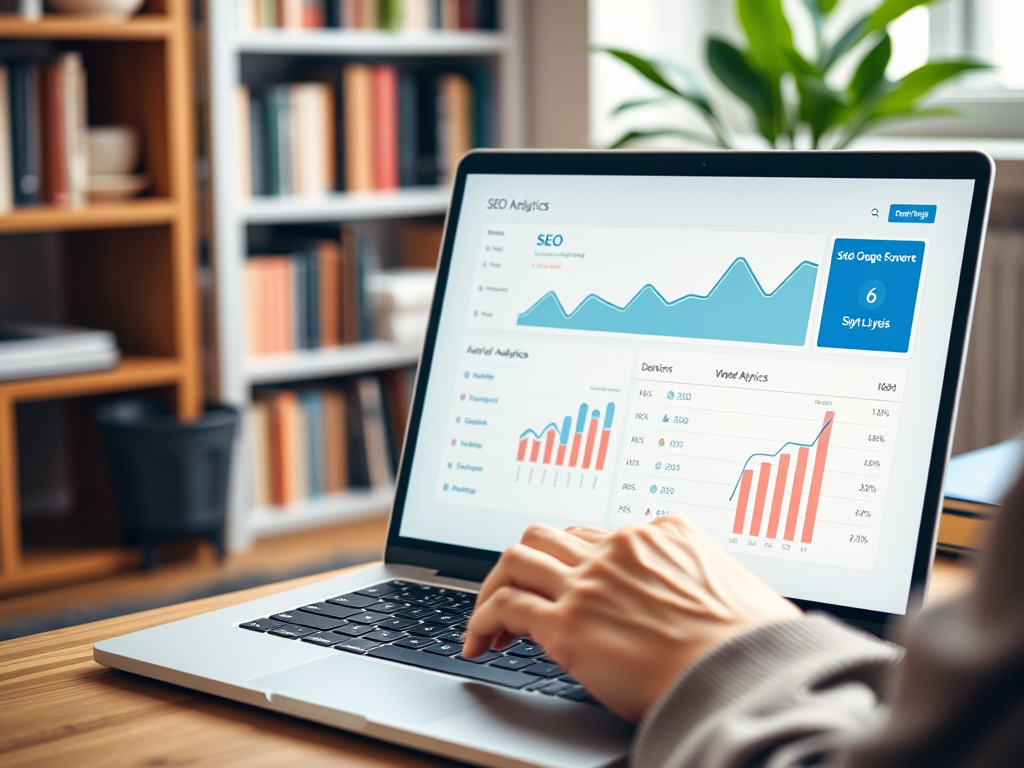In the fast-paced world of digital marketing, creating content that stands out can feel like an uphill battle. With millions of blog posts published every day, it’s critical to understand the nuances of writing SEO-friendly blog posts that can cut through the noise. This article is designed to equip you with the knowledge needed to optimize your writing for search engines while still engaging your audience. By leveraging various SEO techniques, you can enhance your blog’s visibility and drive more organic traffic. The blend of creativity and strategy is where the magic happens. We’re about to delve into essential components like keyword research, content structuring, and essential on-page SEO techniques that will elevate your blogging game.
Understanding SEO and Its Importance in Blogging

Writing SEO-friendly blog posts is essential in today’s digital landscape. With an ever-increasing amount of content online, the need for visibility has never been greater. SEO, or Search Engine Optimization, helps increase the chances of your content being discovered by target audiences. This optimization process is rooted in understanding how search engines function. When you craft your blog posts with SEO best practices in mind, you not only attract more readers but also establish your authority within your niche. Thus, navigating the world of SEO is imperative for anyone serious about blogging.
Keyword Research: The Foundation of SEO

Before you can write an SEO-friendly blog post, you need to start with keyword research. This is a critical component that informs the entire structure and content of your post. Understanding what keywords are trending provides insight into what your audience is genuinely interested in. It sets the groundwork for creating relevant content that resonates with readers. Elasticity in your keyword choices can also allow you to tap into related topics. Therefore, effective keyword research should not be an overlooked phase.
- Google Keyword Planner
- Ahrefs
- SEMrush
- Ubersuggest
These tools can help you identify popular search queries and topics relevant to your niche, guiding your content creation process. Utilizing these resources not only saves time but also enhances the relevancy of your posts.
Structuring Your Blog Post for Optimal Readability
A well-structured blog post not only enhances user experience but also improves SEO effectiveness. Readers often skim through content, and if your posts are not easy to digest, they may leave your site quickly. This is where thoughtful structuring becomes essential. By breaking content into manageable sections and using headings effectively, you can guide readers through your narrative seamlessly. In addition to improving readability, good structure allows for better indexing by search engines. Below is a quick overview of how to structure your blog post effectively.
| Heading Type | Use Case | Importance |
|---|---|---|
| H1 | Title of the post | Single primary keyword focus |
| H2 | Main sections of content | Organizes content hierarchy |
| H3 | Subsections under H2 | Provides additional details |
- **H1 Tag:** This should include your primary keyword and is usually reserved for the title of the blog post.
- **H2 Tags:** Use these for major sections of your content, ensuring they are relevant to the main topic.
- **H3 Tags:** Implement these for sub-sections under H2 headings when additional detail is required.
Crafting Engaging and Relevant Content
Your content must be both engaging and helpful to readers. SEO-friendly posts prioritize quality and relevance, impacting bounce rate and user engagement significantly. To achieve this, focus on writing in a conversational tone that invites readers to keep reading. Short paragraphs and bullet points can also enhance readability and retain user interest. Incorporating images and videos can add another layer of engagement, stimulating visual learners and enriching their understanding of your topic. Ultimately, high-quality content should always meet the user’s intent, addressing their queries directly and effectively.
On-Page SEO Techniques
On-page SEO is about optimizing individual web pages to rank higher and earn relevant traffic. Key techniques include utilizing meta tags and employing effective linking strategies. By integrating these techniques, you can improve your blog posts’ SEO performance significantly, making your content more appealing both to readers and search engines.
Meta Tags and Descriptions
- Meta titles should be concise and include your primary keyword.
- Meta descriptions ought to be compelling and provide a clear reason for readers to click.
Internal and External Linking
Linking to relevant internal blog posts can help keep visitors on your site longer. External links to authoritative sites can bolster your credibility. Both types of links have considerable roles in enhancing SEO, guiding readers to more valuable resources, and improving your site’s overall relevance.
Conclusion
Writing SEO-friendly blog posts is a blend of strategic planning, keyword research, engaging content creation, and technical optimization. Implementing the techniques discussed, such as effective structuring, creating quality content, and robust linking strategies, can elevate your blog’s visibility. Think of each blog post as a craft—the more care and precision you use, the more you will reward your audience. Ultimately, understanding SEO opens doors to a wider readership, establishing your influence in the digital realm. When you can marry quality content with SEO techniques, that’s when your blog truly shines.
Frequently Asked Questions
- What is an SEO-friendly blog post? An SEO-friendly blog post is content that is optimized for search engines, improving its chances of ranking high in search results through effective keyword use, structure, and quality.
- How important is keyword research? Keyword research is crucial because it identifies the phrases your target audience is searching for, allowing your content to align better with their needs.
- Should I use images in my blog posts? Yes, images enhance engagement and can also be optimized for SEO with appropriate file names and alt text.
- How often should I update my blog? Consistent updates are beneficial. Aim for regular posting while ensuring that each post maintains high-quality content.
- What is the role of meta tags? Meta tags summarize your content for search engines and potential visitors, impacting click-through rates from search results.
